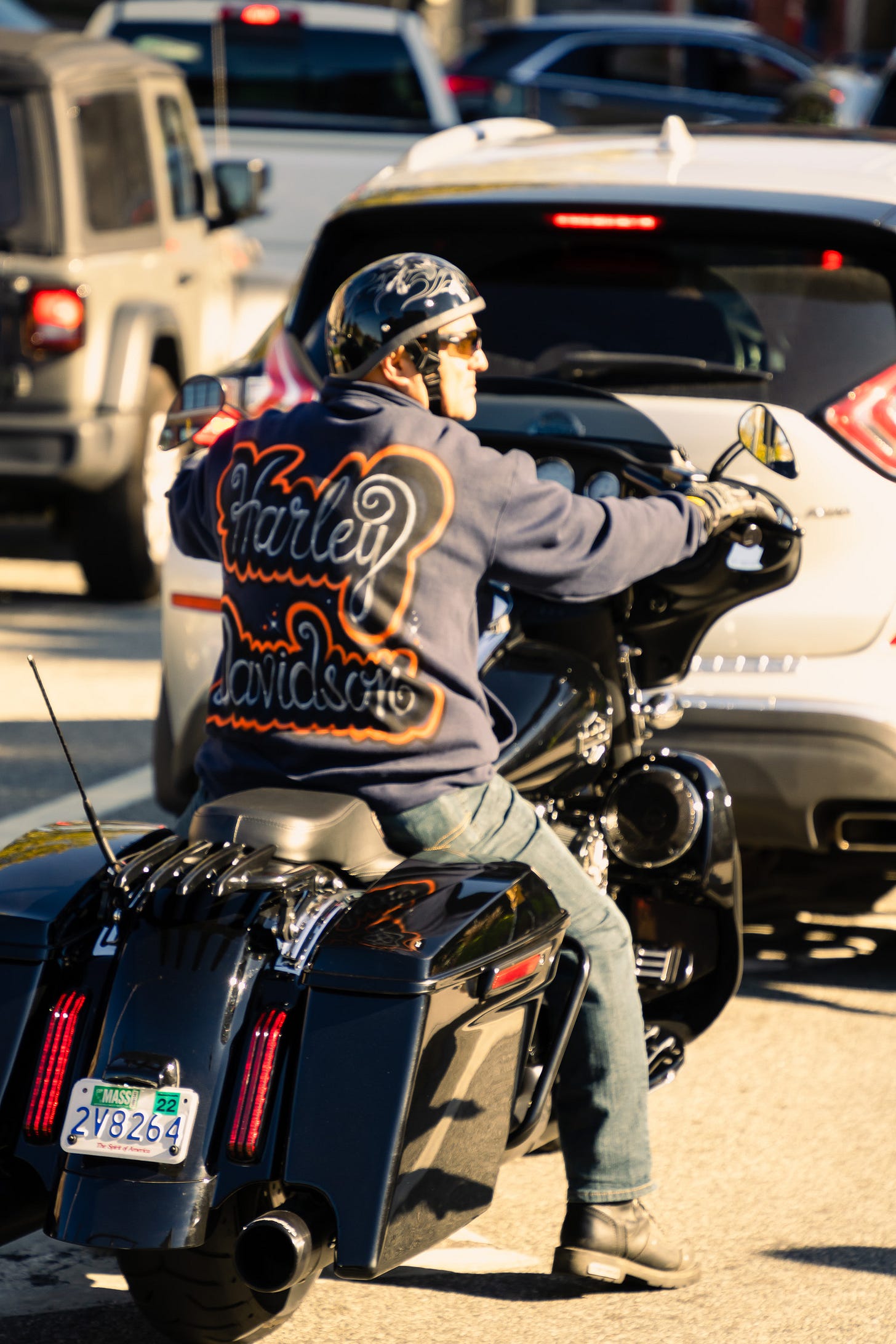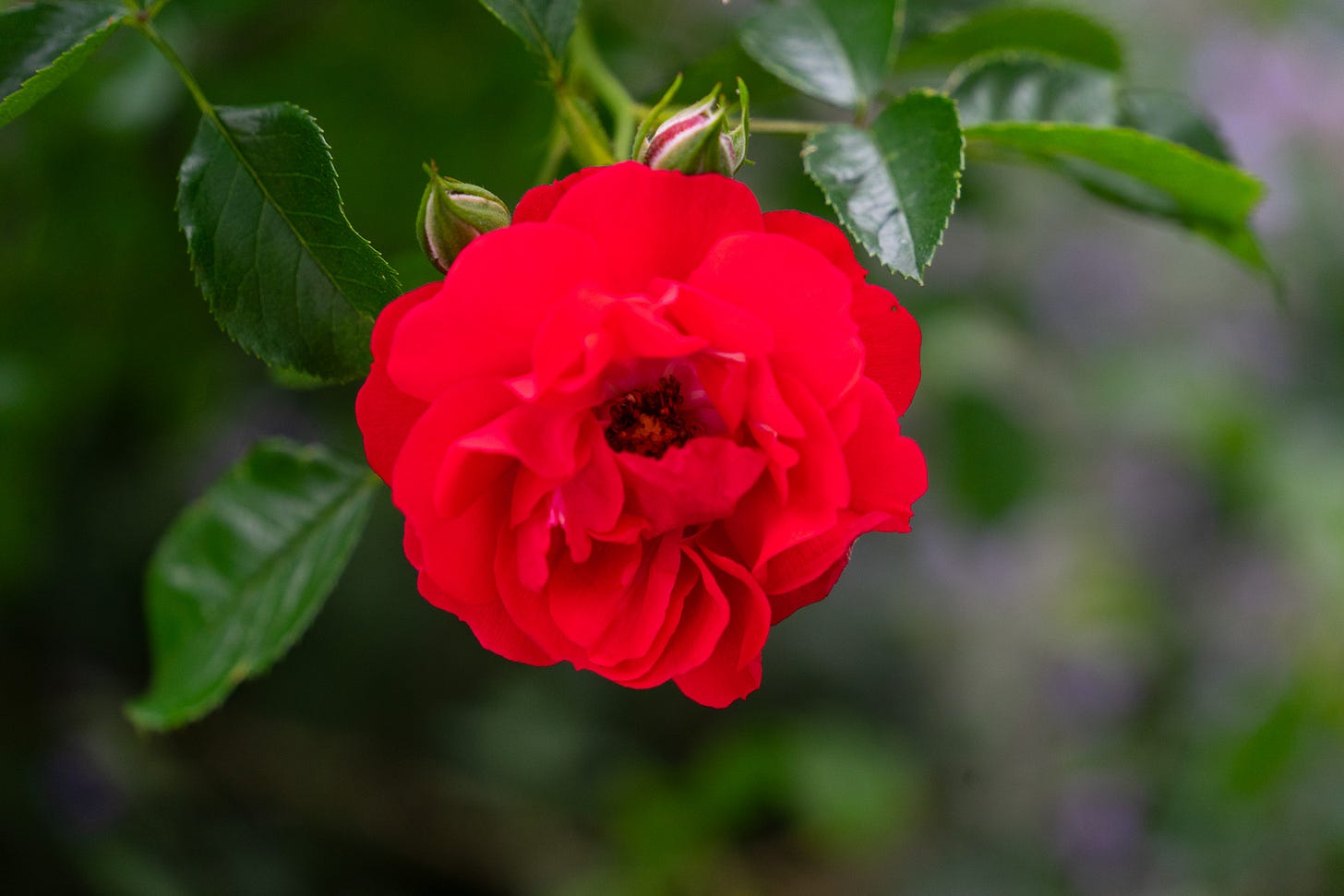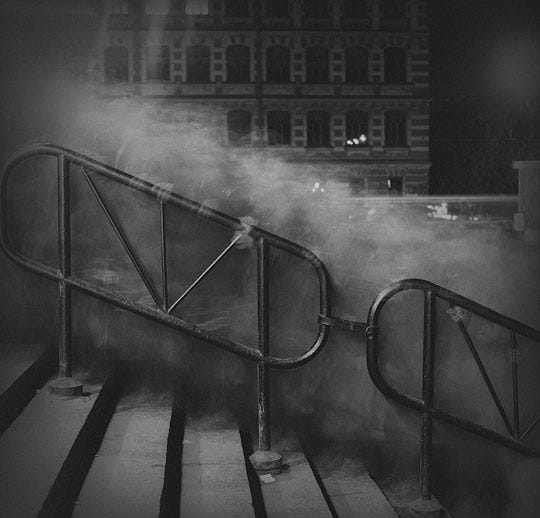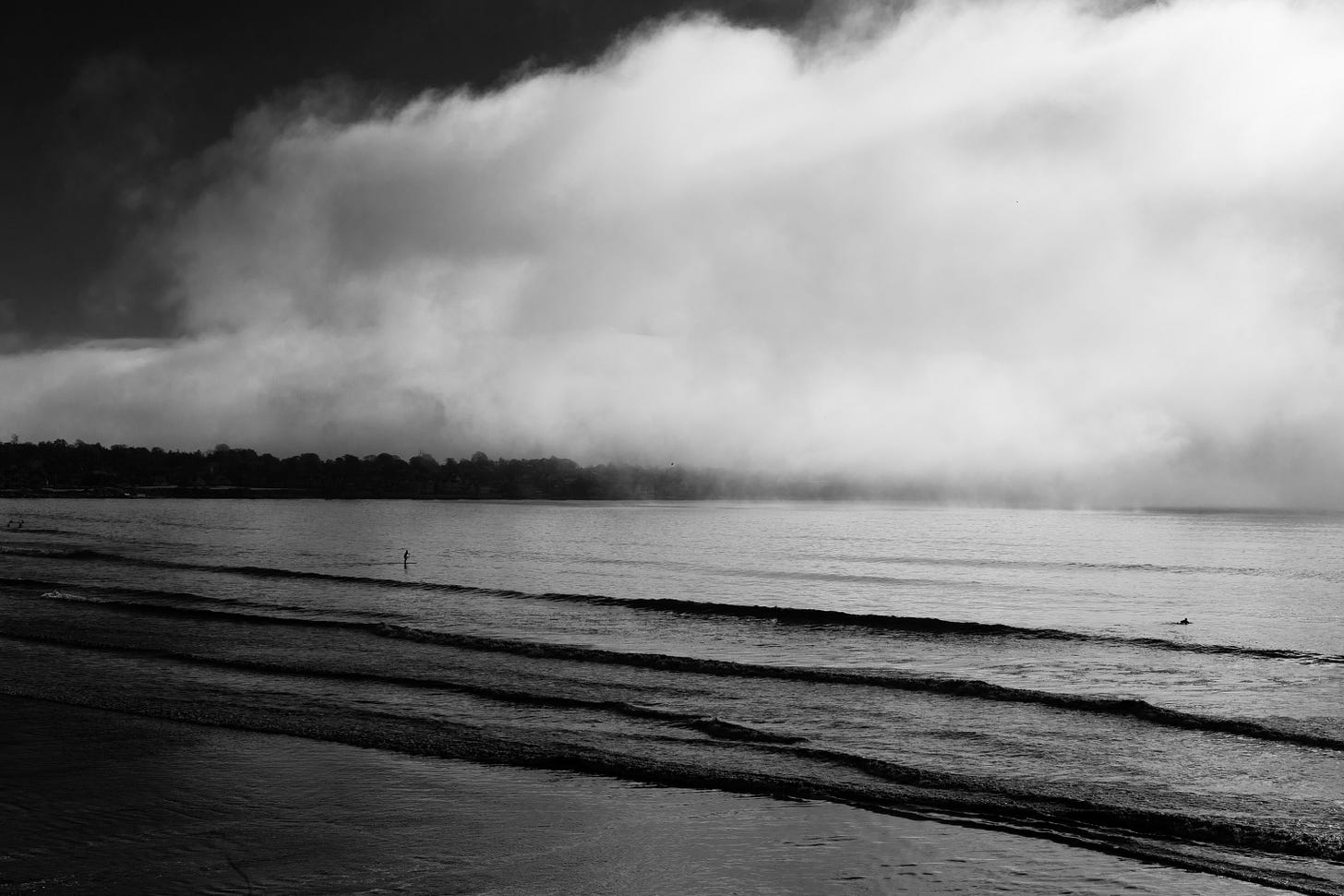Yes, yes, everything can be esotericized. The whole “if you walk, walk”, and “anything done with appropriate intention”1 school would have us believe that washing dishes is the key to nirvana. Though I am being facetious there is something to this. I’ve been taking photo walks for a while and find there is a great deal of self awareness and contemplation that can be gleaned from this practice. If walking is about walking, a photo walk is about walking and seeing. I realize that there is an argument to be made that this splits the attention, but I am making no claims other than personal ones. Here are some lessons I’ve gleaned.
Find your focal length:
This was taken with a zoom lens at 200mm. Though a form of “street photography” it could not have been captured without the longer lens.
Many photographers recommend one focal length or another, especially street photography. You will hear things like “zoom with your feet” discouraging the use of zoom lenses and the pure experience of a manual focus prime, preferably on a $10,000 Leica rangefinder. This is bullshit. I find that my preferred lens is a 28-200mm zoom. Further I find that I am almost always shooting at the far end in the 200mm range. What does this say about me? Perhaps I prefer to stand back and see the world at a distance. I also use autofocus which has helped me get some good shots. Your focal length is determined by what you are trying to capture. Take the time to understand what fascinates you and why. The above gentleman on a motorcycle drew my attention because he was blaring “Forever Young” from what was obviously a very expensive sound system. It made me think about growing older and the ways we make fools of ourselves. Young people make fools of themselves as well, but they are young and better looking, therefore more likely to be forgiven.
Choose your aperture:
Rose captured at shallow aperture. Note the blurred background focusing the eye on the subject.
Many photographers find the use of f1.4 or even 1.2 essential for creating dreamy background blur or “bokeh”. I find myself shooting mostly landscapes and rarely shoot wider than f5.6. I prefer to see everything in focus using leading lines to direct the viewer. To me there is a certain honesty to a picture where everything is in focus. The most annoying example of this background blur technique has to be in Zoom calls where people blur out their background or even insert a fake background. It is unrealistic and lazy. This all reflects my own tastes. I don’t trust people that seem to be taking shortcuts and I want to see everything up front. Recently the photographer Frederik Trovatten did a video2 on how to shoot pictures in the style of Russian photographer Alexey Titarenko. What struck me is his assertion that Titarenko used time to make his subject stand out by blurring those around the subject with a slow shutter. This is a diabolically hard technique. Here is Titarenko
And here is my terrible attempt to take something in the same style.
Knowing your limits is only achieved by trying new things and failing. You learn nothing by playing it safe.
Choose your subject:
I shoot almost entirely landscapes with few exceptions. Though there are often people in the shot they are usually far away and indistinct. as in the shot below.
Fogbank rolling in on Easton’s Beach in Newport
What does this say about me? Am I afraid of people? Curious but not a part of the crowd? Do I find natural phenomena more interesting?
It may be that this exercise is more analysis and has nothing to do with the occult and esoteric. That may be true, but, I caution you to remember Socrates’ advice to “know thyself”. All aspects of art or indeed “The Art” must be undertaken with this as a firm foundation. If you do not believe self analysis and reflection are necessary aspects of any spiritual or metaphysical pursuit you will not get very far.
This philosophy is attributable to many schools but specifically Zen Buddhism. See https://www.zen-buddhism.net/what-is-kinhin-or-walking-zen-meditation/








